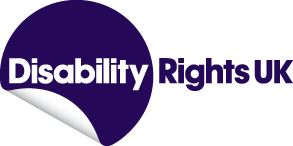ODI evaluation on Right to Control released
Government pilots to provide disabled people with personal budgets integrating a number of funding streams failed to deliver any benefit, an Office of Disability Issues (ODI) evaluation has found.
Right to Control was designed to enable disabled people to pool resources from up to six funding streams - Access to Work, Adult Social Care, Disabled Facilities Grants, the Independent Living Fund, Supporting People and Work Choice - and exercise choice and control over how the combined budget was spent.
It is being tested in seven ‘trailblazer’ areas: Barnet, Essex, Leicester, Manchester, Newham, Greater Manchester, Sheffield and Barnsley, and parts of Surrey, starting in 2010 and running until December 2013.
The ODI evaluation says that there is no evidence that the Right to Control pilots had had a positive impact on disabled people either in terms of their experiences of applying for and organising services, or in terms of their day-to-day lives.
It concludes that -
“While Trailblazers have made substantial progress in delivery over the course of the pilot, this evaluation did not find any evidence that the Right to Control had a significant positive impact on customers in Trailblazers.
The primary potential explanations for this are that many customers were not following the intended Right to Control customer journey and that provider markets were insufficiently developed to offer meaningful choice.
The result is that Trailblazer customers generally had similar experiences to, and received similar levels of choice to, customers in non-Trailblazer areas.”
Given there was no evidence of positive impact the reports says that it might be said that the Right to Control generated a negative net benefit equivalent to its overall economic cost of £10.1 million.
However, the ODI says nonetheless that -
“… the illustrative break-even analysis showed that in terms of quality of life and employment, relatively small improvements could be sufficient to justify the costs of the programme (although this evaluation has not assessed the likelihood or feasibility of achieving these improvements).
It is also important to note that a large proportion of the total cost came from set-up costs, which would of course account for a smaller proportion of the total cost over time if the Right to Control was continued.”
The ODI identifies four necessary conditions for making the Right to Control work for disabled customers -
- customers understand their right and know that they can have choice and control over their support;
- there is a meaningful choice of providers and support options;
- customers have access to information, advice and guidance to make choices with confidence; and
- there are support mechanisms to help customers manage direct payments or the option to delegate this responsibility to a third party.
- and concludes that -
“Across the Trailblazers, it was rare for all these factors to be present. If the Right to Control is rolled out, more progress will be needed to allow disabled people and carers to take advantage of what it can offer.”
The ODI Evaluation of the Right to Control Trailblazers is available at http://webarchive.nationalarchives.gov.uk/20130812104657/http://odi.dwp.gov.uk/docs/wor/rtc/rtc-synthesis-report.pdf
You can view our response to this at http://disabilityrightsuk.org/news/2013/august/dr-uk-response-right-control-pilots
In its recently published disability strategy - Fulfilling Potential - the government said that it would consider the ODI evaluation findings and would announce whether it planned to further roll out Right to Control in due course.
For more information see - http://disabilityrightsuk.org/news/2013/july/response-fulfilling-potential-making-it-happen
